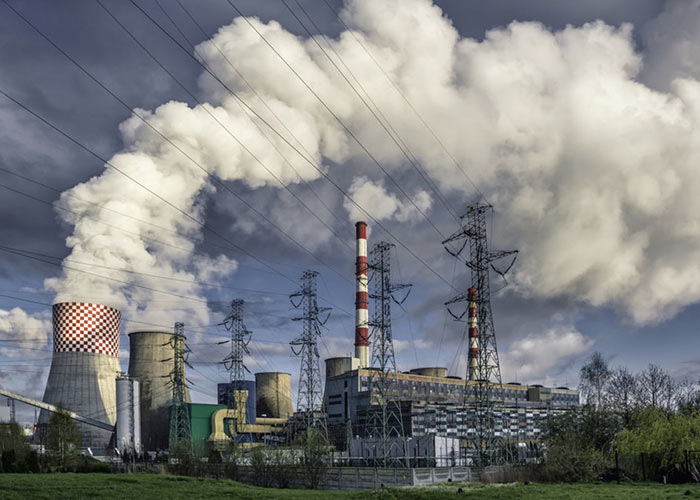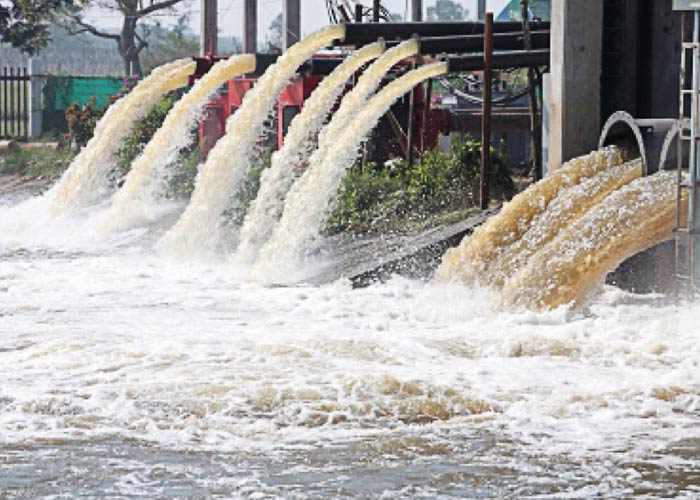No creature on Earth can live life in isolation but this inter-dependence of species in Nature is under grave threat due to increasing population, industrialization, urbanization and the desire to over-exploit the environment.
Among several forms of pollution, thermal pollution increases natural outbreaks like flood, drought, and famine. It leads to an alarming increase in sea water level. With the constant impact of heat, the glaciers can melt, which can cause immense damage to living organisms. The possibility of climate change increases with thermal pollution, which has a severe ill-effect on agricultural production.
What is Thermal Pollution?
The pollution of any kind, which changes the natural temperature of water at an undesirable scale leads to thermal pollution. One of the common causes of thermal pollution is the use of cooling water by power plants and industrial manufacturers. When the water used for cooling comes back to the natural environment, its temperature is high. The change in temperature decreases the amount of oxygen and also affects the ecosystem.
The temperature of the water increases with thermal pollution, which leads to decrease in aqueous oxygen. Life of aquatic organisms is based on aquatic vegetation. So, water pollution seriously affects the aquatic species.
Generally, coal is burnt to generate thermal energy; the energy generated is converted into electrical energy. But in the process when coal is burnt, there is an emission of many gases which pollute the atmosphere. These gases are mainly carbon monoxide, fly ash, sulphur, nitrogen oxides and hydrocarbons, etc. As their concentrations increase in the atmosphere, thermal pollution is spread in the environment.
What are the Main Sources of Thermal Pollution?
Many large factories excessively heat up objects for smelting. Besides this, there are many such substances in these objects which cannot be used in the factory. Instead of disposing them off properly, industries discharge them into the river. Due to this, the water of the river becomes polluted. As a result of extreme heat, many aquatic organisms, especially fish, die; it is called ‘thermal shock’. It has serious implications for environment as the fish helps to keep it clean by eating waste material in rivers. Oxygen cannot dissolve in hot water and due to this many aquatic organisms are destroyed.
Radioactive substances are major pollutants. The water released from the thermal and nuclear power stations make the aquatic organisms and humans sick by polluting rivers and lakes.
Generally, industries take water from a source (such as river), use it for cooling and then return the hot water to the same source. For example, power stations run the turbines from the steam produced by heating the water. After the evaporation of steam from water, for the effective functioning of the turbines, it is cooled and converted into water. This condensation is done with water from any water source as the water absorbs heat. This hot water, which is hotter than at least 150 Celsius more than usual, is then left in the same water source.
Another reason for thermal pollution is the discharge of excessively cold water in the hot river water by reservoir pond/tank. It makes it difficult for fish and other types of bacteria to survive in the absence of a particular type of temperature (lukewarm).
What are the Effects of Thermal Pollution on the Environment?
The consumption of coal in industrial activities leads to the following pollutants that increase the problem of thermal pollution-
- Carbon monoxide – Coal fired thermal power plants are one of the main contributors for emission of carbon monoxide, which is produced due to the combustion process when coal is burned.
- Hydrocarbons – All the materials used in the form of fuel in different carriers have hydrocarbons. Burning of them causes hot gases in the atmosphere, thereby increasing the temperature of the atmosphere. It has an effect on the skin, causing skin diseases and skin cancer.
- Fly ash – The particles of burnt fuel accompany gases emanating from industrial houses, which keep flying in the air. They are quite hot and increase the temperature of the atmosphere, which has a bad effect on plant and vegetation.
- The Oxides of sulphur and nitrogen – Burning of coal releases sulphur dioxide. This gas is 75 percent of the total emitted gas in the environment. According to one estimate, 10 million of sulphur dioxide reaches the atmosphere in the world per year. There has been rapid increase in the use of coal by National Thermal Power Corporation (NTPC). In 1950, 35 million metric ton coal was used, which increased to 240 million tons in 2000 in our country. Sulphur dioxide has adverse effect on the eyes and respiratory system, as well as on the monuments of archaeological importance.
- Aldehydes – In non-thermal power stations, oxides of nitrogen are also emitted, which include nitrous oxide, nitric oxide, and nitrogen dioxide. They adversely affect the environment and give rise to various diseases.
Impact of Thermal Pollution on Aquatic Life
Thermal pollution has an extremely adverse effect on human health, and environment in general. Increasing the heat of water decreases the solubility of oxygen in the water and triggers the metabolism of the fish. This changes the river’s environmental balance. If the increase in heat is up to a certain limit, then the growth rate of fish increases and the yield of fish is increased near the powerhouse. But due to the closure of the plants from time to time, which can be both controlled and unplanned, sudden changes occur in the temperature of the water, leading to the death of aquatic creatures.
Animals living in the hot seas are, generally, not able to tolerate a temperature increase of more than 20 or 30 degree Celsius and most sponges, molluscs and shrimps die at temperatures above 37 degree Celsius. This reduces the bio-diversity because the species habitual of living in lukewarm water cannot survive and flourish in extremely hot water.
How can we avoid Thermal Pollution?
We need to take appropriate measures to prevent thermal pollution. There should be proper use of unproductive materials derived from thermal stations. Gases emanating from thermal power stations should be utilized in other works. The workers employed in these stations should be made aware of pollution so that they are able to take measures to avoid it. Vehicles should be refuelled according to the appropriate green emission criteria.
How can we Control Thermal Pollution?
If the hot water comes out of condensing, then the thermal pollution can be controlled by passing it through the cooling pond or the cooling tower. This heat gets scattered in the air and then water can be left in the river or can be used again for cooling in the plant. It is advisable to build a large and shallow pond. The hot water is released by the pump on one side in the pond and the cold water is released from the other side. The heat gets out of the pond and breaks into the atmosphere.
The use of cooling columns is an effective solution. Such structures take less space than the pond. Most of the heat here is transferred by evaporation. Hot water coming from condensing is sprinkled on vertical sheets or bottoms, and then this water comes down as thin films. The cold air enters the column from the pipe formed on the base of the pillar and becomes cool by upward-rising vapour. The natural flow remains due to the difference between the outside cold air and the density of the hot air inside.
Additional heat dissipates in the atmosphere at a height of 100 meters from the base of the column. The cooled water deposits on the floor of the pillar and is sent back to the condensers of the powerhouse. But the defect in both of these methods is that the amount of water disappears through evaporation.
New Research to Prevent Pollution of Fly Ash
The amount of average fly ash generated by the coal used in thermal power plants is about 40 to 45 percent. As a result of the production of one MW of electricity in the Indian scenario, approximately 1800 tonnes of fly ash is produced daily. This ash contains about 20 percent thick ash (sand) and 80 percent fly ash. Production of fly ash in India is currently about 120 million metric tons, which can be estimated to be 150 million metric tons by 2020.
New research has been started under MIT Director Prof A. Ghosh to control fly ash emanating from thermal power plants. The research includes assistant professors and students of the Civil Engineering Department. The work on control of fly ash under this project is underway on two projects at Renusagar and Orissa in Uttar Pradesh.
The rising amount of fly ash is reflected in the form of land use, health and environmental hazard. So far 140000 hectares of land have been wasted towards the disposal of fly ash. While regular sprinkling of water on these dumping sites is necessary, on the other hand, it is also an increasing challenge to stop the water from going into the ground water. It is because the components present in the fly ash make the water poisonous. Therefore, these dumping sites need to be managed appropriately. No wonder that under the MIT project, special care is taken for the provision of water clearance and stability standards. Fly ash is being disposed of through extensive technical research.







